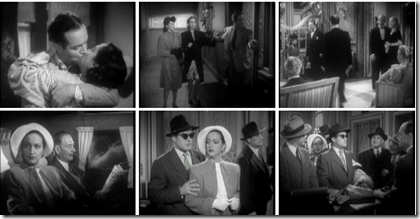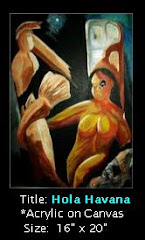
Even as a teenager watching her old movies, I didn’t really get the allure of Dorothy Lamour.
I suppose it was a generational thing, since in the late 1960’s and early 1970s `babeness’ was defined by the likes of Katherine Ross, Susan Dey, and Stella Stevens.
All-American girl-next door types were in . . . exotic was out.
At least in my mind.
But while the years may not have been particularly kind to this old body, they have managed to convey a greater appreciation for the charms and talents of `Dottie’. Even more so since getting to hear many of her radio shows of the 1940s.
For Dorothy Lamour, despite the exotic name and her famous sarong, was an all American girl (albeit of French Louisianan, Spanish, and Irish descent). . . from New Orleans.
Born Mary Leta Dorothy Slaton in 1914, and several years later her mother remarried a man named Clarence Lambour. She would eventually convert her step-father’s name into her stage name, Lamour.
`Dottie’ won the Miss New Orleans beauty contest in 1931, and shortly thereafter moved with her mother to Chicago where she worked as 17 dollar a week elevator operator at Marshall Fields Department store.
From there a friend convinced her to try out as a singer for a local bandleader with a syndicated radio show. She later moved on to Manhattan, where Rudy Vallee helped her get a job at the El Morroco night club.
By 1935 she had her own 15 minute radio show, was a regular performer on Rudy Vallee’s radio show, and had been given a screen test by Paramount.
Her stock in trade were exotic roles such as Ulah in The Jungle Princess (1936), Marama in The Hurricane (1938), and Tura in Her Jungle Love (1938), although other roles came her way as well.
She also starred in St. Louis Blues (1939), The Big Broadcast of 1938 (1938) with Bob Hope & W.C. Fields, and Man About Town (1939) with Jack Benny.
But it was the pairing of her with Bob Hope and Bing Crosby in the first of their `Road to . . .’ pictures - The Road To Singapore (1940) - that would forever define her career.
In all, she co-starred with Hope & Crosby in 5 very popular road pictures, and described the experience saying, "I felt like a wonderful sandwich, a slice of white bread between two slices of ham."
Lamour was one of the most popular pin up girls of WWII, worked tirelessly on the war bond circuit, and wasn’t above poking fun at her own image.
Although her movie career dwindled in the 1950s, her lack of pretension has been credited with her longevity and popularity in show business, which saw her performing in dinner theatre and on TV guest shots into the 1970s and 1980s.
We’ve a couple of Dorothy Lamour movies from the Internet Archive, and for my money, something even better; Thirty episodes of her 1948-1948 variety radio show.
First, the movies. And (IMHO), the best `road to’ picture. The Road to Bali.

Bing and Bob are on the Lamb (literally) trying to avoid a breach of promise arrest in Australia when they are hired to bring up a sunken treasure (guarded by a giant octopus, naturally) in Bali.
Dorothy is the Island Princess/straight man/love interest.
Forget about the plot. Enjoy this for the ad libs, the cameo appearances, the bickering, the musical numbers, and the inspired lunacy of a movie that knows its a movie.

The movie opens with Bob Hope, a professional baby photographer, on Death row telling reporters how he was framed . . . . in a terrific parody of the private eye genre.
The Sealtest Variety Show, which ran on radio from 1948-1949, starred Dorothy Lamour but was also a showcase for some of the best radio and movie talent Hollywood could present.
Nearly every show had two `big name’ guests. A lot to pack into 30 minutes, with room for commercials, a song or two from Dottie, and usually a short `vignette or play’.
Radiolovers.com has a page with 30 episodes of this series located at Sealtest Variety Theater, including the infamous live broadcast from the Shamrock Hotel (more later).
• Alan Young and David Niven
• Brian Ahern and Hal Peary
• Burt Lancaster
• Cavalcade Of Tony Martin
• Christmas Show
• Cornel Wilde And Ed Gardner
• Dean Martin and Jerry Lewis
• Don Ameche And Jerry Colonna
• Donald O'Conner and John Lund
• Douglas Fairbanks Jr and Red Skelton
• Edgar Bergen
• Fibber McGee and Molly
• Gene Kelly and Dennis Day
• Happy Ending
• Husband And Wife Breakfast Shows
• Jack Benny and George Murphy
• Jack Carson and Boris Karloff
• Joan Davis and Robert Cummings
• LIVE From The Shamrock Hotel
• Lloyd Nolan and Eddie Cantor
• Love Pact
• Lum N Amber
• New Years Show
• Richard Widmark and Bob Burns
• Robert Young and Bob Hope
• Sir Lancelot Of The Lake
• Slight Of Hand
• The Pirate Of Orleans
• Victor Moore
• Waiting Room
Given the limits of technology, and the fact that often audiences were listening to live broadcasts, the number of on air `train wrecks’ were relatively small during the golden age of radio and TV.
I described the famous `Frankenstein’ incident on a live telecast of Tales of Tomorrow back in 2008 (see Tales Of Tomorrow) thusly:
Over the years, the retelling of the story has embellished it a bit, but it is an example of how things didn't always go as planned during a live broadcast.
The legend is that Lon Chaney Jr., under the influence of alcohol, thought that they were doing a dress rehearsal, and not a live broadcast. During his `rampage scene' in the first half of the show, instead of busting up props, he picked them up and then set them down carefully.
For whatever reason, Chaney does pick up, and set back down, a number of props - particularly in the first half of the show.
Another infamous moment of broadcast history occurred on March 17th, 1949, when Dorothy Lamour and her guests Van Heflin and Ed `Archie’ Gardner were to broadcast live from the Shamrock Hotel in Houston, Texas.
The room where the show was to be broadcast from had a capacity of about 1,000 seats, but when the doors opened to first-come first-served seating, more than 1,000 wanted in.
As broadcast time neared, the crowd remained loud and unruly, and the nightmare was just beginning. Audio problems made the onstage performances nearly unintelligible, but magnified the audience noise.
Just before the first commercial break you can hear an audio technician in the booth cursing. Almost worse, there were several minutes of `dead air’, followed by `fill-ins’ of pre-recorded march music.
The commercial breaks, coming from the studio, however, came through loud and clear.
The second half of the show saw a gradual improvement in the audio quality, but the live audience – apparently well lubricated – was becoming louder and more unruly.
The show was off the rails badly at this point, and in the comedy sketch that followed Ed Gardner goes off script and begins to ad lib sarcastic remarks at the noisy live audience. Dorothy Lamour manages to rein Gardner in – for the sake of the radio audience – and the skit continues.
Now impossibly behind schedule, the comedy sketch is stopped before its finale, and the show goes to a musical break.
This train wreck of a radio show convinced Sealtest of the wisdom of broadcasting from the safety of their NBC Hollywood Studios in the future.
It’s entertainment value is suspect, but as a piece of broadcast history – and evidence of Murphy’s Law - it can’t be beat.
Take my word for it, the other 29 episodes are a treat.



















